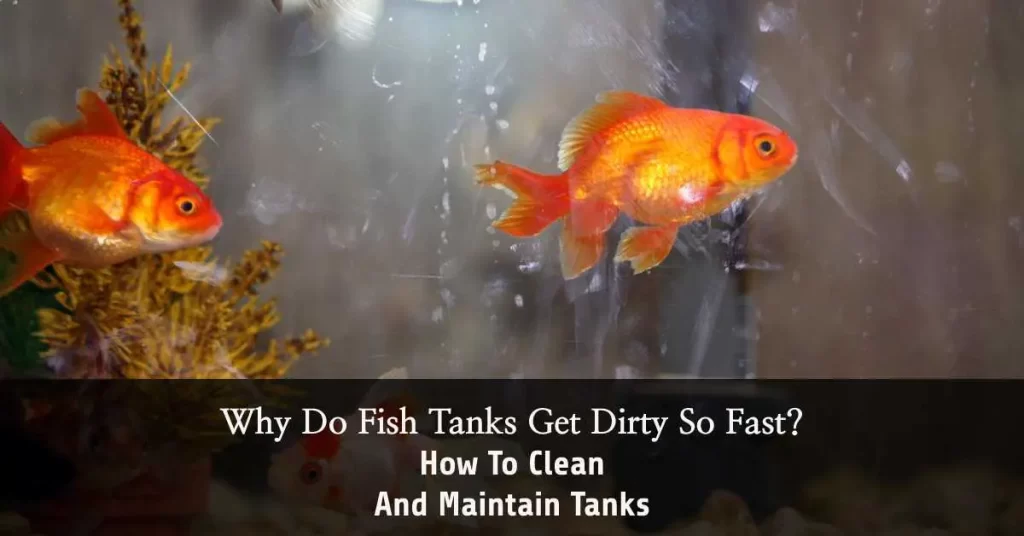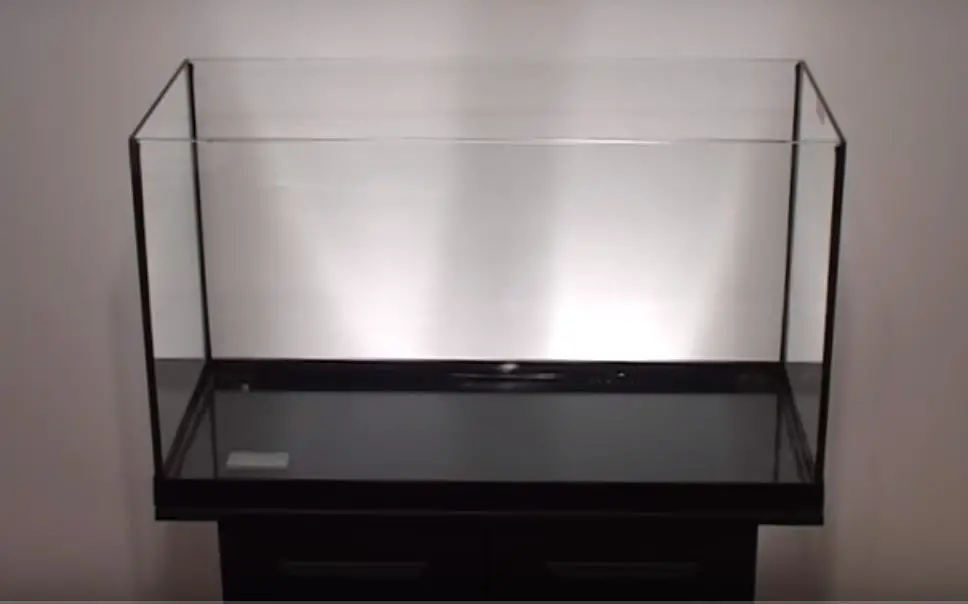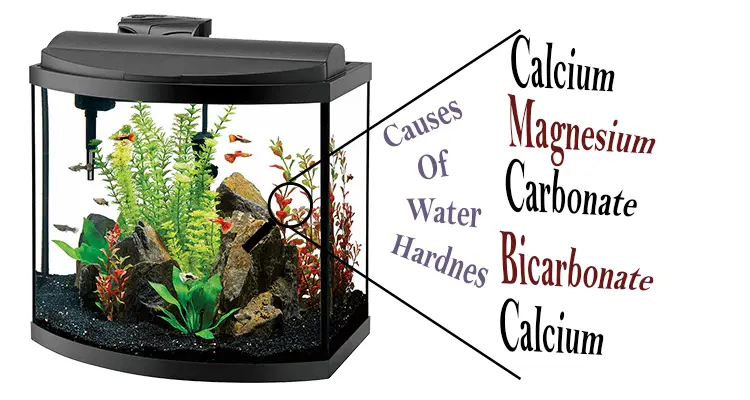Have you ever woken up to dirty fish tanks and wondered, “Didn’t I just clean it a week ago?” This is a very common occurrence amongst us, fish enthusiasts. Although the calming effect of the fish swimming around in a fish tank is great, cleaning your fish tank can surely turn into a chore very quickly.
Why is Your Fish Tank Getting Dirty?
First, it is important to note why your fish tanks may be getting dirty so fast. The following are the major reasons why:
An Incomplete Nitrogen Cycle
The three main biological toxins that occur in a fish tank, which helps in the pollution of a fish tank, are ammonia, nitrite, and nitrate. These three toxins should either be converted or expelled from the fish tank by the means of a “nitrogen cycle”. The nitrogen cycle is essentially the degradation of ammonia to nitrites, and then to nitrates, which ultimately becomes food for plants inside the fish tank.
Hence, if this nitrogen cycle is incomplete, which might be due to a lack of live plants, the excess of nitrogenous compounds could cause your fish to die. Therefore, if you choose not to have live plants in your fish tank, then make sure to remove them yourself.
It is important to note that a well-maintained fish tanks will not have any levels of ammonia.
Related Article: How to maintain the hardness of the water in the aquarium
Overcrowding of the Fish Tanks
Buying new fish that looks interesting is certainly something that fish enthusiasts are guilty of. However, more fish means more food to feed them. Hence, more fish feces at the bottom of the fish tank.
Furthermore, more fish also means more fish breathing and urinating in the same fish tank, which increases the level of carbon dioxide and ammonia in the water, respectively. Hence, to avoid having your fish gasping for oxygen, it is better to keep only a few fish in your fish tank.
Overfeeding the Fish
It is normal for you to think that your fish might be going hungry. However, overfeeding them could cause more harm than good. A good rule of thumb is, feeding them once a day. Furthermore, always make sure that the food is not in the tank for more than two minutes because the uneaten food will cause the ammonia and nitrite levels in the water to rise.
Related Article: How to feed aquarium fish?
Also Read: Why is my fish obese?
Excessive Exposure to Sunlight
Too much exposure to sunlight is another no-no, as sunlight helps the growth of algae. Moreover, these algae will grow on every surface that the sunlight touches, including the glass of the fish tank, the plants, and even the décor!
Lack of Live Plants
You may have guessed it by now; live plants are the solution to maintaining clean water in your fish tank! (Refer to (1) for more details!)
Furthermore, as calculated by Dustin Wunderlich, a professional aquarium hobbyist, you need to add 12 inches of live plants for every inch of fish you put inside your fish tank.
Hence, a little calculation, and there you have it: a clean fish tank!
How Often Should You Clean Your Fish Tank?
The first thing you need to remember is, there is not a general rule about how often you need to clean your fish tank. It all depends on how many fish you have, what type of fish they are, and how soon your water starts looking dirty.
Hence, a good way to go about it is to clean your fish tank a little every day. However, make sure to change your tank water about once every two weeks!
The Products/Equipment You Will Need
There might be online sources that tell you that you need every product in the market to clean your fish tank. However, the following are the basic products that will get the job done quickly and efficiently.
- Algae scraper and algae pad
- Razorblade (use one with a plastic blade for acrylic tanks)
- Bleach
- Fish-net
- Water siphon (to vacuum the gravel)
- Bucket (make sure to use a separate water bucket that is only used for cleaning the fish tank)
- Glass cleaner/lime remover (made especially for fish tanks)
- Aquarium water conditioner (chlorine remover), Stress Coat
- Aquarium salt
- Filter media: (Check your filter for the media).
How to Clean Your Fish Tank?
Although cleaning your dirty fish tanks may seem daunting at first, once you get into the habit of doing it, it becomes a form of therapy! Below is the step-by-step procedure for cleaning your fish tank:
Step 1: Cleaning the Inside Glass
Start by cleaning the glass of the fish tank on the inside, using an algae pad. Although you may think using a dishwashing sponge might get the job done just as well, it is important to note that these sponges may hold residue in them that could fatally harm your fish.
However, if there is residue on the glass that is hard to remove using an algae pad, you can always opt for a razor blade to scrape it off the glass. Although, make sure that your razor blade is plastic if your fish tank is acrylic!
Step 2: Cleaning the Decor
Once you have tackled step 1, remove the decor from the fish tank such as rocks, artificial plants, and other decor items that have any algae growth on them. Place them in warm water inside a clean bucket. Then, give them a good scrub using an algae scraper to remove the algae from the rocks and plants.
However, if there is any particularly stubborn algae growth on the rocks or artificial plants prepare a 10 percent bleach solution and soak the items for 15 minutes. Afterward, if there is any remaining residue, scrub it off using the algae scraper, rinse it with water, and let it air-dry to remove any residual bleach. Moreover, avoid putting them back in the fish tank until there is no detectable chlorine/bleach smell.
As for living plants, you can clean them with bleach too. However, when it comes to stem plants, you will need to prepare a 5 percent bleach solution, soak the plants for 2-3 minutes, and then rinse with water.
After you have cleaned the decor items, leave them outside of the fish tank, and move on to Step 3.
Step 3: Place the Fish in a Temporary Tank
Have a temporary tank available, and make sure that you fill it with the original fish tank’s water so that the fish do not have to adjust to a sudden change in their environment. Carefully, remove the fish from the fish tank and place them in the temporary tank, using a fish-net. It is important to cover the temporary fish tank with a lid. It ensures that the fish do not jump out.
Step 4: Unplugging the Electrical Devices
It is important to unplug all electrical devices except for the hood light in the fish tank. Hence, at this point, make sure that your aerator, filter, and heater are all unplugged.
Step 5: Siphoning the Debris from the Bottom
You can start this process by using a water siphon to remove the dirty water and vacuum the debris from the gravel. Make sure you have a bucket or container that is large enough to hold the dirty water coming out on the other end of the aquarium siphon.
Furthermore, always keep in mind that you only need to remove between 25%-50% of the original dirty water to ensure that you have cleaned the fish tanks successfully. Also, always remember never to remove more than 75% of the original water since you will also be getting rid of all the good bacteria in the water that your fish need to survive.
Step 6: Cleaning the Outside Glass
Once you have removed the dirty water, move on to cleaning the outside of the fish tanks using a glass cleaner or lime remover, made especially for fish tanks. After using the glass cleaner, wipe it down with a clean, damp cloth.
Step 7: Refill the Tank
Begin this step by replacing the cleaned decor items, the heater, and aerator inside the fish tank. However, make sure to leave the last two unplugged. Then start refilling the tank, up to 90% of the full volume of the tank with tap water, which should be as close to the temperature of the dirty water as possible.
Step 8: Aquarium salt and water conditioner
Now that you have refilled the tank with clean water, you can add the aquarium salt and water conditioner. For this step, you will need to read the instructions on the packet carefully, before adding both of these chemicals. After adding them, let it sit for 15-20 minutes, while the substances diffuse and the water temperature adjusts itself to the original water’s temperature.
Step 9: Return the Fish to the Tank
You can now return the fish to the tank and let them enjoy the clean environment!
Step 10: Clean the Filter after Two Weeks
Once all the above steps are accomplished, the next step is to wait for two weeks! After two weeks, replace the filter media (or wash it and place it back). Although this may seem strange, it is necessary because you have just added clean water to the tank. It may be causing the loss of many of beneficial bacteria.
Hence, changing the filter media after two weeks ensures that most of the beneficial bacteria remain in the water. The water from the tank passes through the filter media and then returns to the tank after filtration. Make sure to read the section below to choose the best filter for your fish tank!
Important Tips and Warnings for Cleaning Your Dirty Fish Tanks
- When cleaning your tank, remember not to empty the tank. This gets rid of many beneficial bacteria in the fish tank that your fish require, to survive.
- Do not use soap or detergents to clean the fish tank, as this could be poisonous for your fish.
- Avoid frequent water changes. You can change the water every other week. Do a 25%-50% water change to maintain the level of helpful bacteria in your tank.
- Try to clean your tank within 30 minutes. Your fishes are not in the temporary tank for too long. This may cause them to run out of oxygen without an aerator.
- Do not try to move a full fish tank. This could ultimately cause difficulties not just for you but for your fish as well.
- Add live plants while aquascaping. This will reduce the possibility of high levels of toxic nitrogenous compounds in the tank water.
How to Keep Your Fish Tank Clean for a Longer Time
After all the hard work you put in to clean your fish tank, here are five essential ways of keeping your fish tank water clean:
- To have control over algae growth, you have to make sure that the nitrates, phosphates, and iron levels in the water are not too high. However, the live plants in your tank require these compounds to survive, so do not get rid of it completely. Nevertheless, to control the levels of these three compounds, you can use a Reverse Osmosis (RO) unit or tap water filter.
Moreover, if your fish tank is getting too much light, which increases algae growth, then you can either move your tank to a place with less light or reduce the wattage of the bulbs in your tank lighting system.
- Having the right filtration system in place is key in ensuring that the water in your fish tank remains healthy for your fish. Although, with a surge in different types of filtration systems in the market, it has now become difficult to choose the right filtration system. Hence, it is important to buy one that employs mechanical, chemical, and biological filtration processes.
- Creating toxic waste by feeding your fish too much or too often is another important issue to keep in mind. You also need to make sure that they consume all the food within a short time so that the uneaten food does not increase the level of toxins in the water.
- Partial water changes help in keeping the water clean. Also, they guarantee that not all beneficial bacteria is lost when performing water changes in the fish tank.
- Siphoning the gravel will take away the possibility of poisoning your fish with high levels of unhealthy nitrogenous compounds, dirt, uneaten food, plant waste, fish waste, and other debris in the water.
Things to Consider When Choosing a Filter for Your Fish Tank
The Size Of Your Tank
For tanks that are under 30 gallons, the most suitable filters are internal filters or power filters. As these have enough strength to clean the tank water thoroughly, yet not too strong to harm the fish. They are the best fit for small tanks.
Breeding or hospital tanks usually require filters with no moving parts. This is because they do not draw small and newborn fish into the filter, causing fewer fatalities. For such tanks, sponge or air-powered filters are best suited. Since they also do not disturb the water surface too much, there will be no hindrances to any sick fish.
For large fish tanks that are over 30 gallons, they require filters with more power to clean the dirty water. Hence, external canister filters or wet/dry filters are the best options for this type of tank as they are the most efficient.
Related Article: Aquarium size and weight
The Type Of Fish You Have In Your Fish Tank
Before buying a filter, you need to know what type of fish you have or want to have in your fish tank. For instance, if they are fast-moving fish, they can handle powerful currents caused by the filter. However, if they are slow-moving fish, they will die if kept in tanks with filters that cause strong water currents.
The Type Of Fish Tank You Have
Tanks that have live plants need CO2 to survive. Hence, if the filters, like gravel filters and sponge filters, which cause air bubbles are used, there will be a shortage of CO2 for the plants causing the plants to starve.
Furthermore, since filters with carbon consume all the plant food, they may not be the best option for you either. Hence, external canister filters will work best for tanks with live plants.
In the case of saltwater tanks, using a power filter that causes a lot of disturbance to the water surface. It might also cause the salt to get on the hood and the lighting system of the fish tank. This will increase the maintenance required of you. Therefore, using a wet-dry or canister filter will be the best choice for you.
The Frequency Of Maintenance That You Prefer
If you have a busy schedule and are unable to clean your filters too often, opting for low maintenance filters, like sponge filters or power filters, will be the best option for you. As long as your tank is not overstocked or overfed, these filters will work best for you.
Furthermore, external canister filters are more effective for larger fish tanks that require more filtering of dirty water. But, they also require more regular maintenance. Wet/dry filters, that are most efficient, are the most complicated while setting up since they need special plumbing and weekly rinsing of the filter.
Hence, it is important that the less time that you can give to maintenance, the simpler your filter should be.
Your Budget
While searching for the best filter, do not get swayed by the most expensive or the fanciest product in the market. All you need to do is keep the above information in mind, and you are good to go!
We are here to help if you have any queries regarding the fish keeping. So, check out other articles on our site for more information. Happy fish keeping!
Related Article: Health Benefits of Keeping Aquarium Fish






